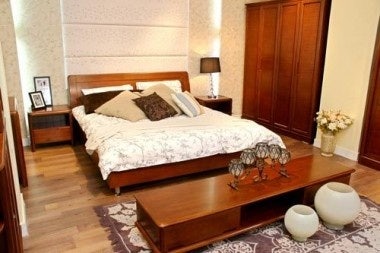Ambitious Internationally Trained, Domestically Focused Designers Look To Fill Gap In Home Decoration Market#

An interesting development that we've seen taking shape over the last few years is that of young Chinese designers, many of them trained in Europe or North America, returning home to create new furniture or home decoration companies specializing in designs that meld ancient Chinese traditional design with a more modern, "globalized" style.
Recently, we've noticed something of a boom in the number of Chinese-language stories about upstart designers or new home furnishing stores that combine old and new, East and West, to break away from a generic reproduction of Western styles or a slavish dedication to preserving traditional Chinese design. While the reality remains that the majority of wealthy urban Chinese will continue to outfit their apartments or villas with foreign brands like Armani Casa, China's younger middle class -- who likely can't afford expensive imported home furnishings anyway -- could be a huge potential market.
This week, Xinhua visits O Gallery, a furniture store in Beijing that caters to the country's more adventurous decorators:
Nestled in the trendy, yet serene 751 D-Park just an arm's length from the bustling 798 art zone is O Gallery - a young business that does precisely that. Despite its short name, the essence of O Gallery is difficult to define in just a few words. It's not just a gallery, nor is it simply a furniture shop. If anything, O Gallery is the physical incarceration of a specific concept and movement in Chinese society, as Tang Meng, one of the gallery's founders, explained.
Before 1995, the concept of having a trendy home was still largely undeveloped in China. Most people could either only afford the most basic items of functional furniture, or simply lacked the awareness of investing in an aesthetically pleasing interior.
This void didn't go unnoticed by the then young Chinese art graduate Song Tao. Having freshly graduated with a master's degree from 1 Pantheon Sorbonne in Paris in 1993, Song returned to China and began heavily engaging himself in the promotion of Chinese contemporary art and design, especially interior and product design.
After founding Tao Gallery and later Tao Studio, Tang founded his own furnishing brand called Zi Zao She in 2002. Unlike most Chinese furniture brands that merely wanted to imitate Western trends, Tao carved a niche for himself by reviving traditional Chinese culture in modern furniture design. Several high-profile exhibitions and the establishment of the China Furniture Design Brand Alliance (CFDBA) later, O Gallery was born.
Overlooking a giant mound of coal on one side and the eye-catching rusty tanks and industrial structures left behind from the 751 power factory on the other, O Gallery consists of three floors: the first floor is home to smaller unique accessories like glasses, clocks, shelves, mirrors, chairs, coffee tables and lighting by an international and domestic team of top designer brands including Moooi, Neru & Hu, Alessi and Kartell.

While not everyone is convinced that Chinese luxury consumers want to buy anything that says "China", there are clearly opportunities in this space, particularly for brands that know who they're trying to target. Obviously, spending the money to market heavily to middle-aged HNWIs is going to have less return on investment than that spent on digital campaigns aimed at younger white-collar professionals, since the highest of China's high-end consumers tends to stick stubbornly to Western brands and little else.
Particularly as more middle- to upper-middle class "post-80s" Chinese professionals become more interested in the arts and decide to outfit their apartments in unique, artsy designs that have a traditional cultural resonance but the comfort of modern pieces, stores like O Gallery should stay busy in coming years.